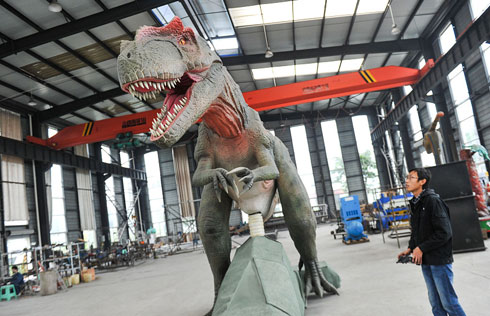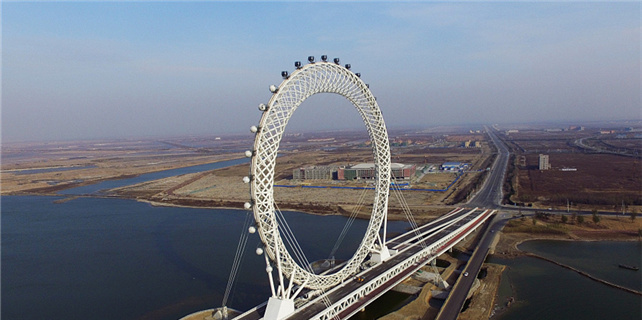Innovation will be key to inland success
Skills, a better environment and technological infrastructure could be the crucial ingredients in moving focus away from the coast
The Made in China 2025 strategy holds substantial opportunities for inland cities. Embracing technology-driven transformation in manufacturing, China's government has pledged to modernize industry and further strengthen the country's globally competitive position. To achieve full development by the midcentury, economic opportunity must be geographically balanced and not isolated to coastal cities. Fortunately for millions of Chinese workers, the emerging global manufacturing order may reward the strengths of inland cities.
According to a China State Council document from 2015, the guiding principles of the 2025 strategy are a focus on innovation, improvement in product quality standards, emphasis on environmental sustainability, optimization of industrial structure, and development of talent. Underpinning these principles is the expectation that growth will be driven by increasingly sophisticated technology.
Machine learning, automation and robotics, internet of things and cloud computing are examples of Industry 4.0 technologies that can improve manufacturing precision and efficiency, product and process re-engineering and market responsiveness. Furthermore, integration between the internet and manufacturing processes is reducing distance-related challenges to coordination and collaboration. Location is less relevant and innovation is becoming, when needed, a remote activity. This is good news for inland cities.
From the producer perspective, inland cities have long enjoyed certain advantages, including low labor costs, cheap land and investment incentives and concessions. This has not translated into geographically balanced economic growth, as China's legacy industries prefer coastal locations for access to international markets and reliable infrastructure.
However, as Made in China 2025 unfolds, industries that have not relocated to countries with lower labor costs may transform in unexpected ways. In some cases, this will reinforce coastal city advantages. For example, with advanced automation, competitive advantage shifts from efficiency in low-skill line work to the ability of employees to manage complex production systems. Companies in coastal areas are likely to benefit from a larger and better trained labor pool.
At the same time, inland cities have faced certain obstacles in development. Infrastructure requirements for heavy manufacturing are substantial and development has a long lead time, while overuse of rivers and rail for transportation creates a dilemma resulting in degradation and congestion. Inland cities have focused on improving connectivity, hoping to convince relocating companies that factor cost savings will more than offset additional logistics costs. This has succeeded to some degree, but Industry 4.0 emphasizes different advantages, further opening the door for inland cities.
The greatest promise for these cities in the Made in China 2025 era is the evolution of company-level innovation, which is no longer isolated to the factory floors of large industrial conglomerates. Structural transformation has democratized creativity. Startups and individual entrepreneurs are now a significant source of innovation, in any place and without large capital commitments.
In the United States, Austin, Denver, Dallas and Raleigh are inland cities that have established competitive positions in technology, research and innovation. Their lively innovation ecosystems reflect a new industrial landscape. In some cases, growth emerges from government investment, and in others by luck. It is clear, however, that political efforts to simply speak a new economic reality into existence rarely succeed. Some initiatives (education, business "friendliness" and infrastructure) are fundamental, but cities must also channel existing advantages to serve the needs of emerging industries. This approach is based not on replication, but on factors like collaborative local ecosystems of entrepreneurs, innovators and funders.
Rather than boasting about costly infrastructure projects or chasing building height records, inland cities should recognize their most abundant but uncelebrated resource: entrepreneurs creatively navigating competitive markets in a myriad of local industries. Developing homegrown talent, one of the guiding principles of the 2025 strategy, can provide a competitive base complemented by the attraction of new talent.
There is still a role for infrastructure, but different types are needed; broadband is the most crucial, followed by intraurban mobility and intercity rail and air connections. Infrastructure must also advance sustainability. An increasingly educated citizenry expects livable urban settings. Clean rivers, blue skies and connections to nature through parks and green space protection highlight lifestyle advantages absent in coastal cities, attracting workers weary of pollution, congestion and high living costs. Hourlong commutes are no selling point. A "green and livable" brand is a natural fit for many inland cities; Kunming is one example.
Finally, for China's economy to progress, governance models must evolve accordingly. Top-down planning and public investment suited the high-growth industrial era, but entrepreneurs now need different things from government: free flow of information, market transparency, protection of intellectual property, capital access and fair business practices. Embracing these principles, many of which are outlined in the 2025 strategy, will level the innovation playing field and allow the most creative individuals, companies, and cities (regardless of location) to drive industrial progress.
Optimistically, China's cities are at the precipice of an economic boom, should they identify how their unique traits catalyze innovation. The outdated approach of blunt-instrument government intervention stifles the flexibility and serendipity that stimulates innovation. Infrastructure is easy with abundant capital and political support, but understanding the balance between what government should and should not do is more complicated. The potential rewards of achieving this balance are high, and inland cities are promising test beds. For new industries, these cities should consider themselves worthy competitors of coastal cities. Even a small early-stage advantage can generate decades of prosperous competitiveness.
The author is a lecturer in public policy at the University of Melbourne, a visiting assistant professor at Nazarbayev University in Kazakhstan and a nonresident fellow for global cities at the Chicago Council on Global Affairs. The views do not necessarily reflect those of China Daily.
(China Daily European Weekly 12/01/2017 page9)


















